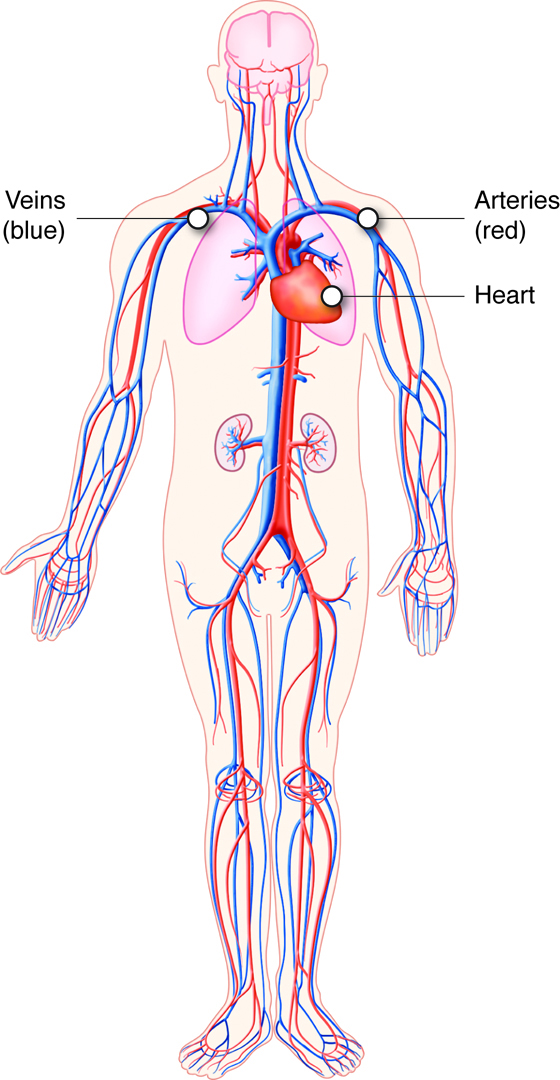41 Cardiovascular System Introduction
All metabolic processes in the body require nutrients and oxygen, and produce waste products. Nutrients are absorbed through the digestive system and oxygen is acquired through the respiratory system. The cardiovascular system transports nutrients, oxygen, ions, proteins, hormones and other signaling molecules, as well as waste products like carbon dioxide. This system also helps to maintain homeostasis of fluid volume, pH, and temperature. The primary components of the cardiovascular system are blood, the heart, and the vessels of the circulatory system.

Common Dysfunctions of the Cardiovascular System
Blood Disorders
The variety of disorders that affects blood highlights how physiology can be impacted by genetics, environmental changes, pathogens or a combination of all of these factors. For example, digestive diseases or prolonged poor nutrition can lead to a loss of blood protein called hypoalbuminemia. There are numerous genetic conditions in blood which cause coagulation (blood clots) inside the body, which can be exacerbated by poor diet and lack of exercise. Also, there are numerous genetic anemias (insufficient number of red blood cells) including thalassemia that are found in regions of the word prone to malaria infection. Malaria is an example of a pathogenic infection of blood cells.
Vascular Disorders
Vascular disorders including hypertension (high blood pressure) are primarily a function of lifestyle including diet, exercise and stress. Recent studies have shown that genetics also plays a role in the presence and progression of these disorders.
Disorders of the Heart
Your heart will beat billions of times in your life, on average once per second; an electrical impulse will cause a mechanical contraction. If the heart conduction system or mechanical system falters, it can lead to devastating changes in heart physiology and whole body physiology. Even if the heart weakens over time it can have damaging effects since the heart never gets a chance to rest.

